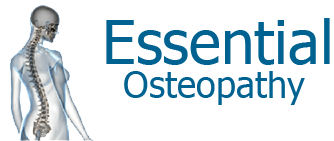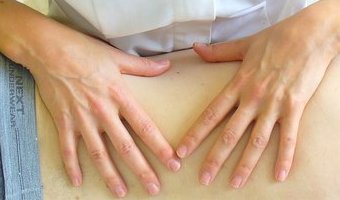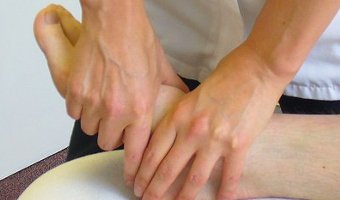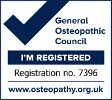Osteopathy helps low back pain
(Medscape)
Patients with low back pain may benefit from the treatment known as osteopathic manual therapy (OMT).
A new study suggests that the technique leads to clinically significant short-term pain relief for this population of patients.
The double-blinded, randomized controlled trial of 455 patients with low back pain is published in the March/April issue of Annals of Family Medicine. It examines whether OMT or ultrasound therapy (UST) is effective for the treatment of low back pain.
“The OMT regimen was safe, parsimonious, and well accepted by patients as demonstrated by high levels of treatment adherence and satisfaction with back care,” authors note. “By contrast, UST was not efficacious in relieving chronic low back pain.”
John Licciardone, DO, from Osteopathic Research Center, University of North Texas Health Science Center, Fort Worth, and colleagues randomly assigned patients to receive OMT (n = 230), sham OMT (n = 225), UST (n = 233), or sham UST (n = 222) for 6 treatment sessions during a course of 8 weeks.
By week 12, 50% (n = 114) of the OMT group and 35% (n = 79) of the sham OMT group reported substantial improvement (relative risk [RR], 1.41; 95% confidence interval [CI], 1.13 – 1.76; P = .002). Additionally, 63% of patients in the OMT group (n = 145) and 46% of those in the sham OMT group (n = 103) reported moderate improvement by week 12 (RR, 1.38; 95% CI, 1.16 – 1.64; P < .001).
By contrast, 44% of those in the UST group (n = 103) and 41% of patients in the sham UST group (n = 90) showed substantial improvement (RR, 1.09; 95% CI, 0.88 – 1.35; P = .43). In contrast, 55% of patients in the UST group (n = 128) reported moderate improvement in low back pain compared with 54% (n = 120) of patients in the sham UST group (RR, 1.02; 95% CI, 0.86 – 1.20; P = .85).
The authors note that the effects of osteopathic manual treatment in this study equaled or surpassed criteria set forth by the Cochrane Back Review Group for a medium-size effect for both moderate and substantial improvements in low back pain.
The study’s limitations include the fact that patients self-reported their comorbid conditions, work disability, and low back pain co-treatments, and the investigators did not verify those reports.
“This study shows that OMT is efficacious for short-term pain relief when used to complement other co-treatments for chronic low back pain,” the authors write.
Whether the treatments have monetary value is also in question, according to the authors.
“There are concerns that chronic low back pain is often managed with costly and invasive treatments of questionable efficacy and safety. Our results support efficacy and safety of OMT; however, they do not address its cost-effectiveness,” the authors write.
For the full article text go to:
http://www.medscape.com/viewarticle/781005







